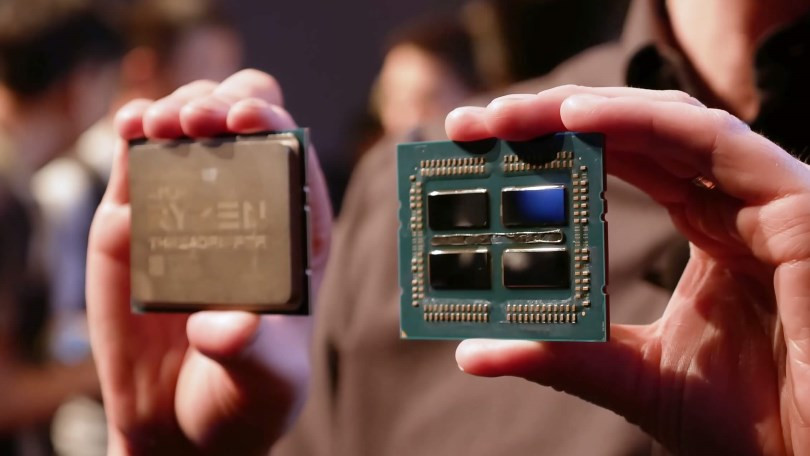
For several years now, Intel has comfortably maintained a lead over its main chip rival AMD. But the tide seems to be turning and Intel’s 28-core demo during Computex 2018 is a sign it is worried about the chips AMD is bringing to market this year.
That’s a reality made clear over on TechSpot, where the truth of Intel’s 28-core 5GHz processor is explained in detail.
Intel demonstrated the chip at Computex as running at 5GHz across all cores and producing a very impressive 7,334 multi-core points score in Cinebench (check out how we test desktop PCs). While a true score, the setup required to achieve it is far from conventional and well beyond what could currently be achieved in a desktop PC for a reasonable price.
Further investigation revealed cooling was achieved by using an air conditioning unit of about the same size as a full tower case hooked up to a liquid cooling system attached to the chip. The motherboard used was enterprise class sporting an LGA3647 socket and drawing what’s thought to be between 500W or as high as 1kW of power. As for the chip, it looks as though Intel overclocked the existing 28-core Xeon Platinum 8180, which costs $10,000.
Intel unsurprisingly contacted TechSpot to point out the demo was for a “real product in development targeted at the high-end prosumer and enthusiast audience.” However, based on this evidence Intel looks to be a long way off delivering such a processor without cooling and parts well beyond the reach of most prosumers and enthusiasts.
You can read what you want into the fact Intel’s (at the time) impressive demo happened the day before AMD turned up with a 32-core processor. Unlike Intel’s 28-core experiment, this new Threadripper 2 is the real deal. Using AMD’s Wraith Ripper air cooler, the chip runs at 3GHz, but achieves a 3.4GHz all-core boost on demand. Its TDP is 250W, it can be used with already available X399 motherboards sporting the TR4 socket, and is expected to be available to buy in August.
Even without Intel’s dubious 28-core demo, how can Intel not be concerned about AMD over the next few years? If it takes that much cooling and hardware costing more than $10,000 to achieve 28 cores at 5GHz, does Intel actually have anything that can compete with a 32-core AMD chip running at 3GHz for a consumer-friendly price? Maybe this demo was meant mainly as a distraction from AMD, but also because Intel does have something to compete with and just doesn’t want to talk about it yet.

